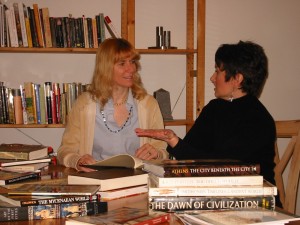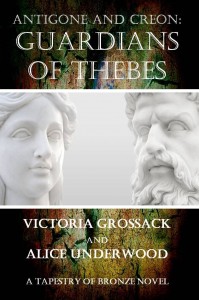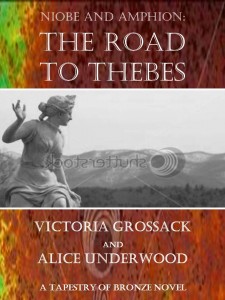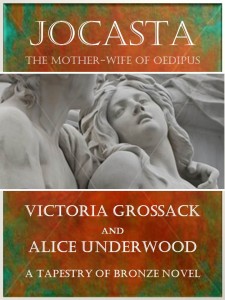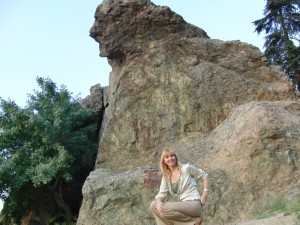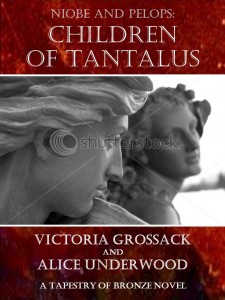I read in the paper over the weekend that there is going to be a memorial to Archibald McIndoe, the plastic surgeon who rebuilt the faces of young airmen terribly burned when their aircraft caught fire in WWll. It is not before time! He was a great man, who not only repaired their faces but rebuilt their confidence, encouraging them to go out into the world instead of hiding away. He worked at the hospital in East Grinstead and persuaded the people of the town to accept these disfigured young men as the heroes they were. East Grinstead became known as ‘the town that didn’t stare’.
I feel strongly about this as I researched his work for my novels NOW IS THE HOUR and THEY ALSO SERVE. Anyone who is interested in this remarkable man and his achievements might find those two books illuminating.
Category Archives: Uncategorized
NEW NOVEL JUST OUT
APHRODITE’S ISLAND has just been published by Robert Hale Ltd. Please go to the BOOKS page for details.
NEWSLETTER FEBRUARY 2014
February has been a quiet month on the whole. Here on the Wirral we have not had the terrible weather that other parts of the country have experienced – although West Kirby and Hoylake got a battering from the sea before Christmas. I’ve just got back from a week’s holiday on the island of Madeira, with friends from the Bridge Club. It is a beautiful place and the weather was lovely. I wish we had stayed longer. We only managed to fit in one levada walk, though we planned to do several more.
Invitations to speak are still coming in. I shall be speaking to the Mid Wirral WI on May 28th and at the Penistone Festival on either Saturday, July 19th or Sunday July 20th.
Rather amusingly, I applied to the Lancashire Federation of WI’s to be on their list of speakers and they require me to do an audition! I’ve pointed out that I’ve spoken to a number of Cheshire WI’s and suggested that they might ask them how the talk went down – but no, they don’t trust anyone else’s judgement. I suppose I’ll have to go through with it.
Meanwhile, I am still working on my Matilda story. (For those who have just joined the newsletter list and don’t know what I am talking about, you can read my last newsletter on my website; www.hilarygreen.co.uk) I’m finding it fascinating to reconstruct the real person behind the various accounts left by contemporary writers; but it requires a lot of research.
APHRODITE’S ISLAND should be out any day now, so watch out for it in your local library.
Thanks to all of you who have written in with appreciation of my books.
Best wishes
Hilary
Good news
Great news! Operation Kingfisher has been selected as one of Amazon’s top 100 e-books below £2.99. The promotion runs till the end of the month, so if you haven’t already read it, go for it!
The Greatest Knight by Elizabeth Chadwick
THE GREATEST KNIGHT
Elizabeth Chadwick
In her author’s note at the end of the book Chadwick comments that the life of William Marshall was so full of incident that to recount it in full detail would require thousands of pages. She adds that it has been necessary, therefore, to sketch some of it fairly briefly. This, I think, encapsulates the main weakness of the novel. A great deal happens, but it was not until halfway through that I began to feel a real connection with the hero.
The early chapters describe William’s rise from the position of a penniless knight, dependant on the patronage of wealthy relatives, to that of tutor and later principal adviser to the son of Henry ll, heir to the throne and crowned in his father’s lifetime as Young King Henry. This is achieved largely through William’s success at the tourney, the dangerous jousting through which knights displayed their prowess with lance and sword. We see him develop from a lad known to his companions as ‘slugabed’ and ‘guzzleguts’ to a man respected for his martial skills and his unswerving loyalty to his lord. It is this loyalty and devotion to his conception of honour that chiefly characterise him, but apart from that I felt that the picture I was given lacked depth. He seems to have no close friends and his relationships with women are casual. Even when he takes a mistress she is marginal to his interest in fighting.
As the young King’s behaviour becomes more erratic and his enmity with his father more bitter, William’s character comes into greater focus. He is torn between his loyalty, indeed his love, for the young man and his horror at the depravity of his actions and I began to feel more involved with him. His devotion when Henry is dying and his grief at his death are genuinely moving.
It is when William decides to set out on pilgrimage to Jerusalem that the problem of fitting so much into one book becomes most acute. Chadwick points out that little is known about this chapter in his life and she therefore dismisses it in one chapter. Such an expedition would warrant a whole book in other hands and I felt slightly cheated by the lack of detail.
The turning point in the story for me came when William marries Isabelle de Clare. She is portrayed as a fully rounded and deeply sympathetic character and as William learns to love her and respect her judgement I found myself warming towards him. But there are still significant lacunae in the story. Frequently we are brought to a point where fates hang in the balance, only to find that in the next chapter the problem has been resolved ‘off-stage’ and the story moves on.
I think this is in part a problem for those writers who set out to fictionalise the lives of known historical personages. There are either too many facts, or too few; and the author has to choose between embroidering some and skating over others. In this case, I think Chadwick might have done better to begin her story later in William’s life, with flashbacks to earlier days, rather than taking us through a succession of tourneys, which have little to distinguish one from the other.
At the end of the book William is only halfway through his eventful life and, in spite of these criticisms, I shall look forward to reading the next episode.
Interview with Victoria Grossack
1 When and how did you first encounter the Greek myths? Was it at school?
When I was six my grandfather gave me a book on Greek mythology. The book was aimed at kids, with simple language and lots of illustrations. Funnily enough my grandfather’s first name was Homer. He hated the name – he made everyone call him “Duke” – but I like the fact that I come from the line of Homer.
2 When did you decide to write a series of novels based on the myths?
When I was 14 and a freshman in high school, we read Sophocles’ Oedipus Rex. I felt then that the story would be more interesting from Jocasta’s point of view, but I was sensible enough to realize that I did not have the skill or the knowledge to write it. The idea stayed with me, and I finally reached a point where I felt ready to attempt it, in collaboration with Alice Underwood.
While we were writing we researched who had been in charge of Thebes before Laius came to power. The queen was Niobe, the one whose children, according to the myths, were killed by the arrows of Apollo and Artemis. Obviously the gods did not really kill the children! When we examined many myths simultaneously, we believed we discovered the actual murderer. That was one reason for our decision to write the Niobe trilogy: Children of Tantalus, The Road to Thebes and Arrows of Artemis; we wanted to expose the actual murderer. We were also fascinated by the people in the stories, for they are still influencing us today.
3 You write in partnership with Alice Underwood. How did that come about?
We were colleagues who had collaborated very successfully on other projects. We discovered we both had an interest in creative writing, and especially in Greek mythology. We had tied for first place in a little short story writing contest, which seemed to be another encouraging omen.
4 How does that work? Do you do a chapter each, or do you work together? Are you in the same room, or is it all done by e-mail?
We often meet in at the beginning or the end of a book while we figure out the timeline and other major issues. If we’re in a busy time in the writing process, we’ll usually have a long phone call on weekends. And there are thousands of emails. Alice has 8 different folders in my Outlook: one for each book, one for general writing project emails, and another for other stuff.
It took us a while to figure out how to best use our writing strengths and weaknesses which are fortunately complementary. I am very good at plot so I usually do the first draft. Alice is better at visual details so she adds most of the description afterwards. The process is iterative: she suggests some plot details and I even do some description. She also does all the covers, so if you’re admiring the covers, doff your hat to her.
5 What made you decide to focus on the Theban stories, rather than any of the other myths?
My initial fascination was with the story of Jocasta, and as that was set in Thebes, it led naturally to the other stories in Thebes. Our current project, based on Clytemnestra, has little do with Thebes.
6 How many books are there in the series? Is it complete?
We planned six novels and have written five of them. The novels are Jocasta: The Mother-Wife of Oedipus, and its direct sequel, Antigone & Creon: Guardians of Thebes. There’s also the Niobe trilogy: Children of Tantalus: Niobe & Pelops; The Road to Thebes: Niobe & Amphion; and Arrows of Artemis: Niobe & Chloris.
7 You have obviously researched the period and the background very carefully. What were your main sources?
We have both visited the places involved. I spent a day with the archaeological director at Thebes, and he drove me around to some of the important sites in the area. I have also explored the ruins at Delphi, Pisa/Olympia, Argos, Tiryns and Mycenae. I went to Turkey, to visit the Niobe rock, as well as the statue allegedly carved by one of her brothers. Then there are the many museums in cities such as Thebes, Athens, Olympia, Rome, Jordan, Turkey, London, Berlin, Munich, Paris and New York. Besides that, we have watched documentaries, read books, and corresponded with the owners of several websites dedicated to Greek mythology. There’s a bibliography and a set of links at our website.
8 Do you think the original myths have any historical truth, or are they just folk tales?
We think that many of the men and women did exist. Fantastical elements such as centaurs and winged horses did not, but places such as Troy have been located as well as others. Just outside of Thebes are a pair caves which have been determined to be royal tombs. Legend says that they are the tombs of Eteokles and Polynikes, the twin sons of Oedipus and Jocasta. In Thebes there is still a fountain named after Dirke. Why was the Peloponnesus given that name if Pelops never existed?
However, in some of the myths, and not just the fantastical portions, there are contradictions and inconsistencies. For example, after the war between the sons of Oedipus at Thebes, what happened to the daughters? In the most famous version Antigone kills herself but that contradicts other stories about her. We research the different versions and choose carefully between them.
9 If they are just folk tales, why do you think they were made up?
They were made up for the same reasons that people make up stories today: for power, glory and entertainment. Someone trying to strengthen his claim to a throne improved his credibility by saying he was descended from a god. In some cases we even know who the real father was, and yet the hero still made the claim. Herakles’ real father was Amphitryon, not Zeus.
We have a better-attested example in later history, when Alexander’s mother decided that her son’s real father was Zeus, and not Philipp. She was trying to improve her son’s claims to glory. Then there are all the times that the Roman senate voted to deify various Caesars.
Other stories seem to be a combination of glory-seeking and entertainment, such as the fights with beasts and monsters. We believe that bards frequently stole from other bards, so that if someone had a good bit about a hero fighting a giant in one song, another bard might copy it into his song to glorify his own hero.
10 You have succeeded in taking the more incredible events in the stories, for example the sacrifice of Pelops to Zeus by his father and his subsequent return to life, and giving them a believable explanation. Was it difficult to see what might lie behind the myth?
We work very hard at providing natural explanations for the events which seem supernatural. We don’t believe in supernatural events and we don’t see why readers today would do so either. So when Tantalus offers his son Pelops as a meal to the gods, we had two major challenges: how to explain his return to life, and how to show the gods’ arrival. As resurrection falls into the category that we consider supernatural, Pelops does not actually die in Children of Tantalus, but is simply very close to it. How to have the gods show up was difficult, until I remembered having witnessed a meteor shower that was as spectacular as fireworks. A sight like that might have made the people of three millennia ago believe that the gods were descending from the heavens. We timed the banquet of Tantalus to coincide with the Leonid meteor shower that takes places every November. Of course the characters don’t know that it’s a meteor shower; they believe that the gods are on their way, but hopefully readers see both sides.
Coming up with these explanations is a challenge, however, and so we have hesitated to attempt some of the other stories. Herakles is fascinating – we met him in Antigone & Creon, for his first wife was Megara, one of the daughters of Creon – but we don’t know how to depict all the monsters in his labours. They’re just too fantastic.
11 Roughly when are your books set, for example in relation to the Trojan War?
Our current project, based on Clytemnestra, Agamemnon’s wife and killer, is contemporaneous with the Trojan War. The other stories are set one or more generations before. We have a huge spreadsheet for tracking events and characters to make sure that our novels don’t contradict each other. The characters in one book, however, may interpret the events of another novel differently.
12 I see there are Greek versions of the books. Do you speak and write Greek or did you have them translated?
Unfortunately we do not speak Greek. We read the alphabet well enough to drive around the country and to sound out place names. Kedros, our publisher in Athens, arranged for and paid for the translations.
13 I notice that your books are published by Create Space, which is a self-publishing facility. Did you offer them to mainstream publishers? If so, what was their reaction?
Yes, we had an agent who repeatedly tried to market the books and nearly succeeded with big names such as Penguin and Random House. The problem with Greek-mythology-based books is that they have an oft-deserved reputation for being difficult and inaccessible. We have worked hard to overcome this in our own writing – and it is a real challenge – so much so that when we get people to pick up the novels they find that they are far more engrossing and accessible than they expected.
14 What plans do you have for future books?
We have written five of the six books that were in our original set. We’re currently working on the story of Clytemnestra. We may write more together, but we have not settled on which ones.
In the meantime, I’m also writing some mysteries. I had an idea based on Jane Austen’s Emma and so I wrote The Highbury Murders: A Mystery Set in the Village of Jane Austen’s Emma. I had so much fun with it and the response has been so positive that I am working on other cosy mysteries, although in a modern setting.
Background to Operation Kingfisher
GERMAN LANDINGCRAFT ON FRENCH CANALS
I was first alerted to the possibilities of this story by Tony, a friend who has a keen interest in Inland Waterways, both in the UK and in France. He has his own narrow boat, which is currently moored on one of the French canals. It was Tony who asked me if I knew that during the war the canal network had been used as a way to smuggle POWs and downed airmen out of the country. When I expressed my interest he sent me some photo copied pages from a book, ‘Keeping Afloat’ by John Liley. These contained a reference to an extraordinary event which occurred in April of 1943. After the Allied invasion of North Africa the Germans, fearing an attack on the south coast of France, decided to move some of their warships from the North Atlantic to the Mediterranean. Rather than taking the long sea route they decided to use the French canal system. French canals are, of course, considerably wider than ours and carry much heavier traffic. The vedettes were brought down the River Yonne and the intention was to take them through the Canal de Bourgogne to connect with the River Saone and thence to the Mediterranean. However, when they reached Laroche Migennes, where the Canal de Bourgogne meets the Yonne, they discovered that the locks on that canal were too short to accommodate the ships. A new route had to be devised and 1,500 young men were pressed into service to rebuild roads, so that the ships could be moved overland. Buildings were demolished, bends straightened out and gradients eased. The nearest slipway was in Auxerre and the residents of that town were astounded to see the spectacle of these huge craft being hauled out of the river. They were loaded onto two 48 wheeled chariots, pulled by three giant tractors, with four more at the rear to provide braking power. It was forbidden to photograph these events but there are, nevertheless, several pictures taken clandestinely to bear witness to this amazing undertaking. Ironically, the RAF was alerted to what was happening and not one of the ships ever reached the Mediterranean!
These events form the background to my new novel, OPERATION KINGFISHER.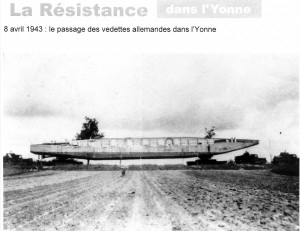
Great review for The Last Hero
I absolutely loved this book. I’ve been a fan of historical fiction about the ancient world ever since reading Mary Renault’s Theseus books when I was in my teens and ever since then I’ve sought to replicate the experience, without much luck. Annabel Lyon’s THE GOLDEN MEAN came close, but Hilary Green’s THE LAST HERO could almost have been written by Renault herself, it feels so authentic, so meticulously researched and so tightly written. I thoroughly recommend it.

